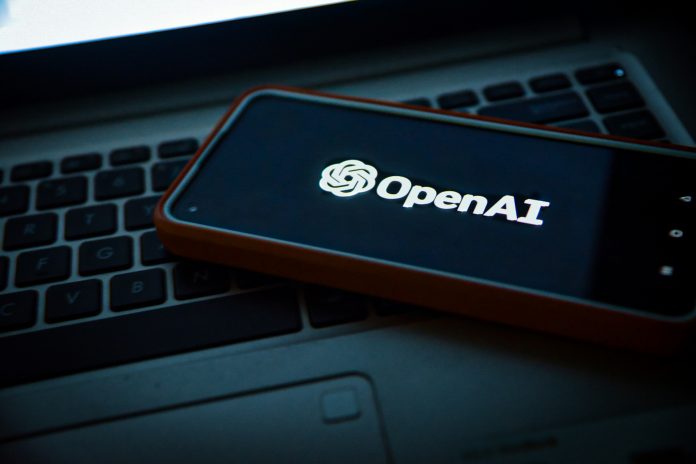US EQUITIES
OPEN AI CONTINUES TO BUILD ITS FORTRESS
To create value for its shareholders and customers, a consumer AI company must master four essential building blocks over the long term: access to computing power, invent the most powerful fundamental AI models, retain the most skilled mathematical researchers, and innovate on numerous use cases to a large customer base. Founded in 2015, with a product only available since late 2022 and not yet generating cash, OPEN AI is doing everything it can to build its business model. Its first mover advantage in the consumer AI market, its 800 million weekly unique usersand its 4 million developers in its community are its main assets.
The agreement with AMD unveiled on October 6, 2025, following the one signed with Nvidia on September 22, 2025, allows OPEN AI to secure its supply of computing chips. Following this announcement, AMD, Nvidia’s challenger, rose by more than 50% and thus created $135 billion in market value, roughly equivalent to the market value of Total Energies.
On October 6, 2025, OPEN AI also held its DevDay 2025, where OPEN AI unveiled new use cases for ChatGPT that will enable it to monetize its services. ChatGPT is a new gateway for digital service providers, just as Windows 95, the iPhone and the App Store, Google with its search engine, and Meta with its social networks were in their day. During this conference, OPEN AI showed that it was continuing to develop tools for autonomous program developers (AI agents), improve its code generation capabilities, and introduce some new features in its APIs (ChatGPT software building blocks that work within third-party applications). The big news from this conference is the ability to run third-party software and applications within ChatGPT: Canva, Coursera, Spotify, Zillow, Expedia, Booking.com, and Shopify and more to come.
It paves the way for monetizing the time spent by users on ChatGPT. Following the business model of the App Store and other marketplaces, OPENAI will likely charge a commission proportional to the service provided by third-party applications.
With a target of $200 billion in revenue in 2030, compared to $13 billion annualized in recent months, OPEN AI needs to generate cash quickly to fund its IT infrastructure, retain its researchers, and remain competitive with the incumbents META, Microsoft, Amazon, and Alphabet.
EUROPEAN EQUITIES
FERRARI’S 2030 EXPECTATIONS DAMPEN THE MARKET
On Thursday, 9 October, Ferrari experienced its sharpest intraday fall since its IPO in 2016(-15.41%), disappointing the market on an investor day that was eagerly (too eagerly?) anticipated by the market.
The group has revised its 2025 forecasts upwards, albeit to an expected level, but without disappointment on that front, unlike BMW, which has revised its 2025 forecasts downwards because of weak growth in China and costs linked to tariffs. At Ferrari, the downward revision of the target for 100% electric vehicles by 2030 (to 20% of the mix, compared with 40% announced three years ago) was already anticipated by the consensus, with the group justifying it by citing strong customer demand for its combustion engine models. It is therefore the 2030 forecasts that are disappointing.
On paper, the 2030 targets are a solid roadmap: revenue of €9 billion, compared with €6.7 billion in 2024, and an EBIT margin of 30% (vs. 28% in 2024), representing an average annual growth rate of 6% over the period.
However, this growth rate pales in comparison to the 10% growth rate of the previous period (2022-2026). The decline in the share price reflects fears of a slowdown compared to the historical trajectory. Should we therefore question the robustness of the Ferrari model?
First, let us note that, in our view, these targets are deliberately conservative and reflect a management philosophy that prefers to deliver rather than disappoint… Hasn’t the group achieved the targets of its previous plan almost two years in advance?
The new targets indicate that growth will be driven more by a favorable price mix than by volume. However, as in the past five years, the product lineup will be dynamically renewed, with four new models launched annually. The group will also benefit from the ramp-up of its upcoming supercar, the F80, priced initially (at €3.6 million excluding customization, for fewer than 800 units already allocated to customers) nearly twice the price of the Icona Daytona SP3. The additional cash flow generated by this single model will be substantial and will significantly boost margins.
In terms of valuation, at 24.16x 2026 EBITDA, the stock is currently trading in line with the average multiple of the last five years, while the average EBITDA margin of 36% was well below the 39.3% expected by the consensus for next year!
Although disappointing given the very high expectations, we believe that this announcement does not call into question the soundness of a business model that enables sustainable revenue growth and structural improvement in already high profitability. In these difficult times for the European automotive sector, which is in the throes of a real crisis, Ferrari should remain attractive in the medium term thanks to its ultra-luxury positioning.



